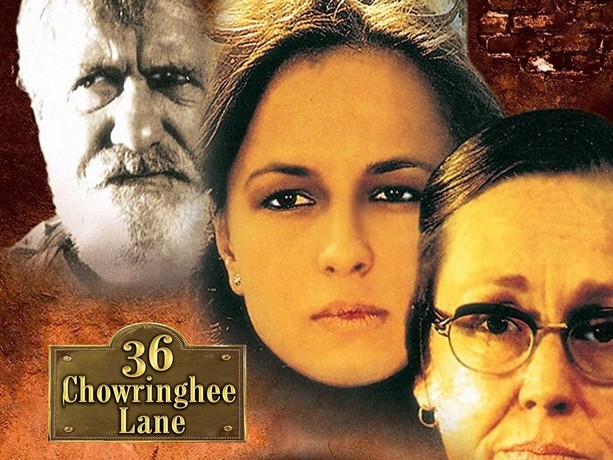 To celebrate Aparna Sen 80th birthday, Subhash K Jha revisits her cult classic, the 1981 drama 36 Chowringhee Lane. We also hear from the noted writer director about the making of her debut film.
To celebrate Aparna Sen 80th birthday, Subhash K Jha revisits her cult classic, the 1981 drama 36 Chowringhee Lane. We also hear from the noted writer director about the making of her debut film.
Aparna Sen’s 36 Chowringhee Lane is a simple story of an aging Catholic woman in Kolkata whose emotional vulnerability is exploited by a young couple. Over the years it has become a haunting elegiac treatise on loneliness, desolation , abandonment and exploitation. How did it happen? Recounts director Aparna Sen, “I think my collaboration with Shashi Kapoor on 36 Chowringhee Lane was destined to happen. That’s what Jennifer Kapoor said to me in one of the many beautiful letters she wrote after the film, she was right. This was a film I had waited to make. Every detail was worked out in my mind beforehand .”
Then Aparna needed a producer. “It was Satyajit Ray who suggested Shashi Kapoor’s name. Shashi had done Junoon and Kalyug with Shyam Benegal . These are films I loved and I knew he could be the right producer for me.Earlier Jalal Agha had taken me to a producer who wanted to know if my film had any action or sex in it. I quickly left explaining mine was a small humane story.”
Then Shashi Kapoor came into the picture. “When I contacted Shashi, he asked me to fly down to Mumbai from Kolkata at his expense with the promise that if he didn’t like the script he would still fly me back to Kolkata at his expense. From there his generosity knew no bounds. They don’t make movie makers like Shashi Kapoor any more.When I reached Mumbai I asked him how to get to his house. Shashi said it was walking distance. But he still sent a car. ‘I don’t want you to be lost in transition,’ he chortled.When I reached his beautiful apartment overlooking the sea I was completely taken up by his aesthetics. Jennifer, Shashi and Govind Nihalani (who I decided after seeing Junoon and Kalyug, was to be my cinematographer) met me in a room jokingly referred to by Jennifer as the ‘chamcha room’ because that’s where Shashi met all the admirers and sycophants.Anyway, there I was in the chamcha room with the three people who were to decide my future, narrating my script. I knew I was on to something. All of them were paying attention. When I finished my narration Govind and Shashi began discussing the budget. In no time I was holding a contract. I kept staring at it in disbelief as I flew back to Kolkata.”
How did Aparna Sen decide on Jennifer Kapoor for the lead? “I’ve Utpal Dutt to thank for that. I was actually thinking of casting a non-professional real-life anglo-Indian woman whom I’d train to fit the part. In hindsight I feel that would have been a disaster. It was Utpal Dutt who suggested Jennifer, ‘Are you mad? Why would you sign another woman when you’ve the perfect fit in Jennifer?’ I was not sure because in Junoon, Jennifer’s powerful performance suggested someone way too strong and in-control to play a frail lonely woman. But I am so glad it was Jennifer. The film wouldn’t be what it is if not for her. After 36 Chowringhee Lane was released, Shashi insisted on calling me Coppola and he insisted I call him Sethji.”
Then there was a cameraman crisis. “After I signed up to do 36 Chowringhee Lane, I realised I was not getting the cinematographer I wanted. Govind Nihalani had date problems. I was shattered. I was absolutely certain I wanted him. But Shashi quickly drew up a list of other options. And he made me watch the work of other cinematographers. Mind you,this was not the era of DVDs or even video cassettes. So for every film that I watched to decide my cinematographer, Shashi would book a theatre in Mumbai. Somehow I didn’t like anyone’s work. Finally, we came to Ashok Mehta’s work, where in a random cabaret sequence in a commercial film, I saw him use a blinding light that was directed right at the audience. That clinched it for me. It was Ashok Mehta and no one else after that.”
The heartbreaking Christmas sequence where the trusting old anglo-Indian lady finds out how she has been betrayed , remains a high-point in the portrayal of the minority community’s isolation. Considered one of the finest performances by a female actor India, Jennifer Kapoor in Aparna Sen’s 36 Chowringee Lane was a lonely old anglo-Indian woman in Kolkata , royally exploited by a young unmarried couple who use her for their own purposes. Without a touch of self-pity Ms Kapoor portrayed the desolate woman with such indomitable dignity, she epitomized the plight of the whole community.When she lost the National award her enraged husband famously made the statement about awards being given to women for soaping their armpits under municipal taps. Shashi referred to Smita Patil in Chakra. Incidentally, the young Violet was played by Jennifer and Shashi’s daughter Sanjana.








